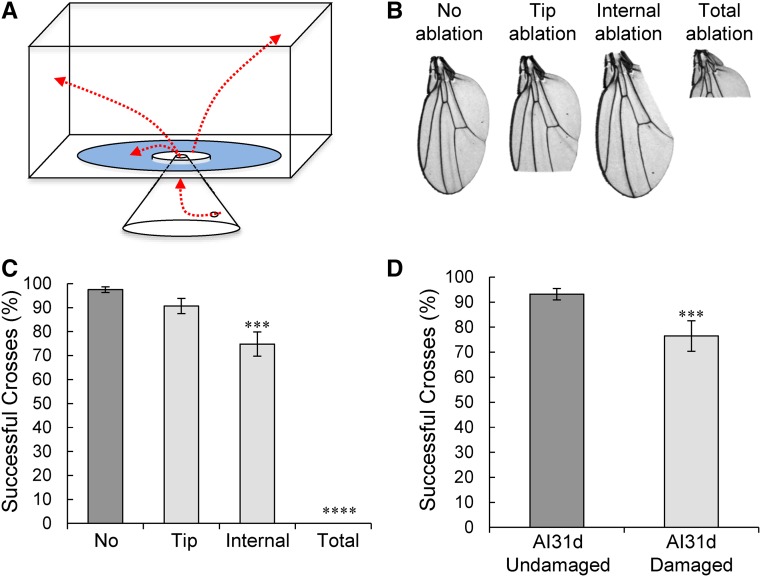Figure 2.
Wing damage impairs flight ability. (A) Schematic of the flight-choice assay: 10 flies are gently introduced in the upside-down funnel, climb up to the platform, and fly or jump off the platform. Surrounding the central platform is a moat of water that can only be cleared if flies can fly. Red lines indicate potential trajectories of movement of the flies that have been introduced into the funnel. Successful crosses are recorded. (B) Pictures of artificially damaged wings are shown next to an undamaged wing. Three types of ablation are compared: tip, internal edge, and total ablations. (C) Manually induced damage to the wings of Canton-S males slightly reduces the percentage of successful crosses while all flies with totally ablated wings never successfully crossed the water, n = 10 groups of 10 flies (ANOVA, no vs. tip: P = 0.37; no vs. internal: P < 0.001; and no vs. total: P < 0.0001). (D) Flies from the high-aggression AI31d strain were group-housed for 21 days and separated into damaged and undamaged flies 1 day before the flight assay. Males with wing damage were significantly less successful at crossing the water moat. n = 12 groups of 10 flies per condition (Mann–Whitney U-test, P = 1.22e−4). See also Figure S2 in File S1.

